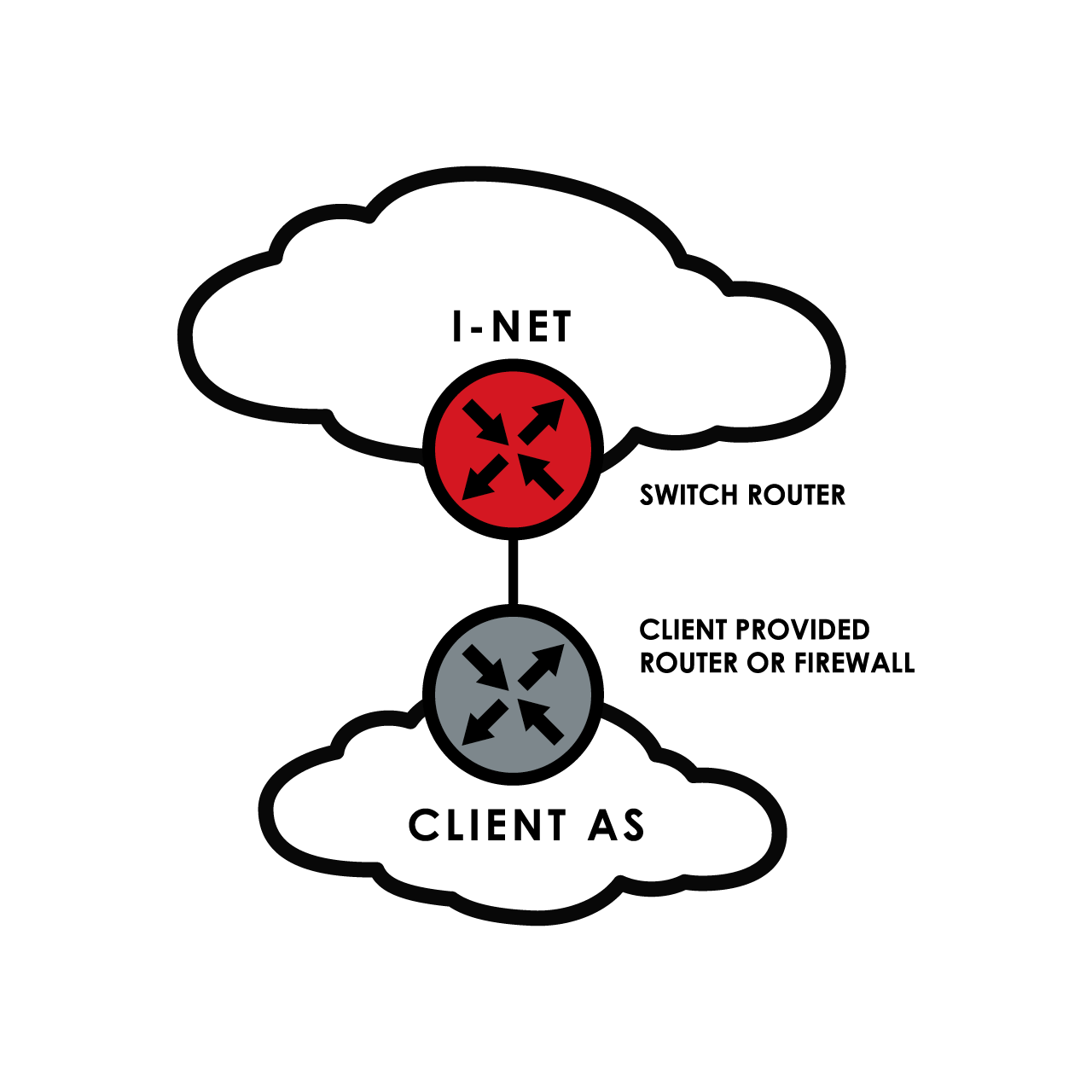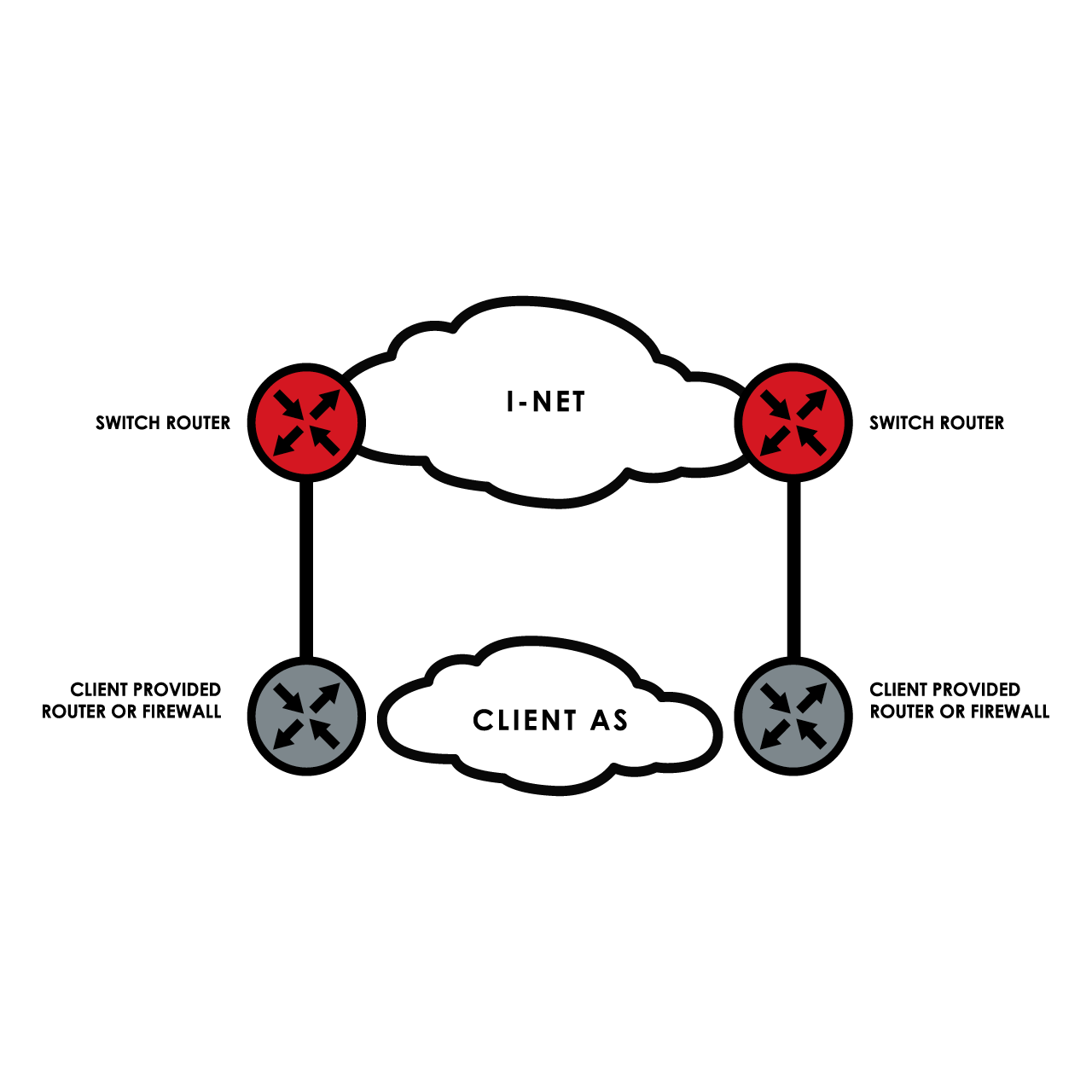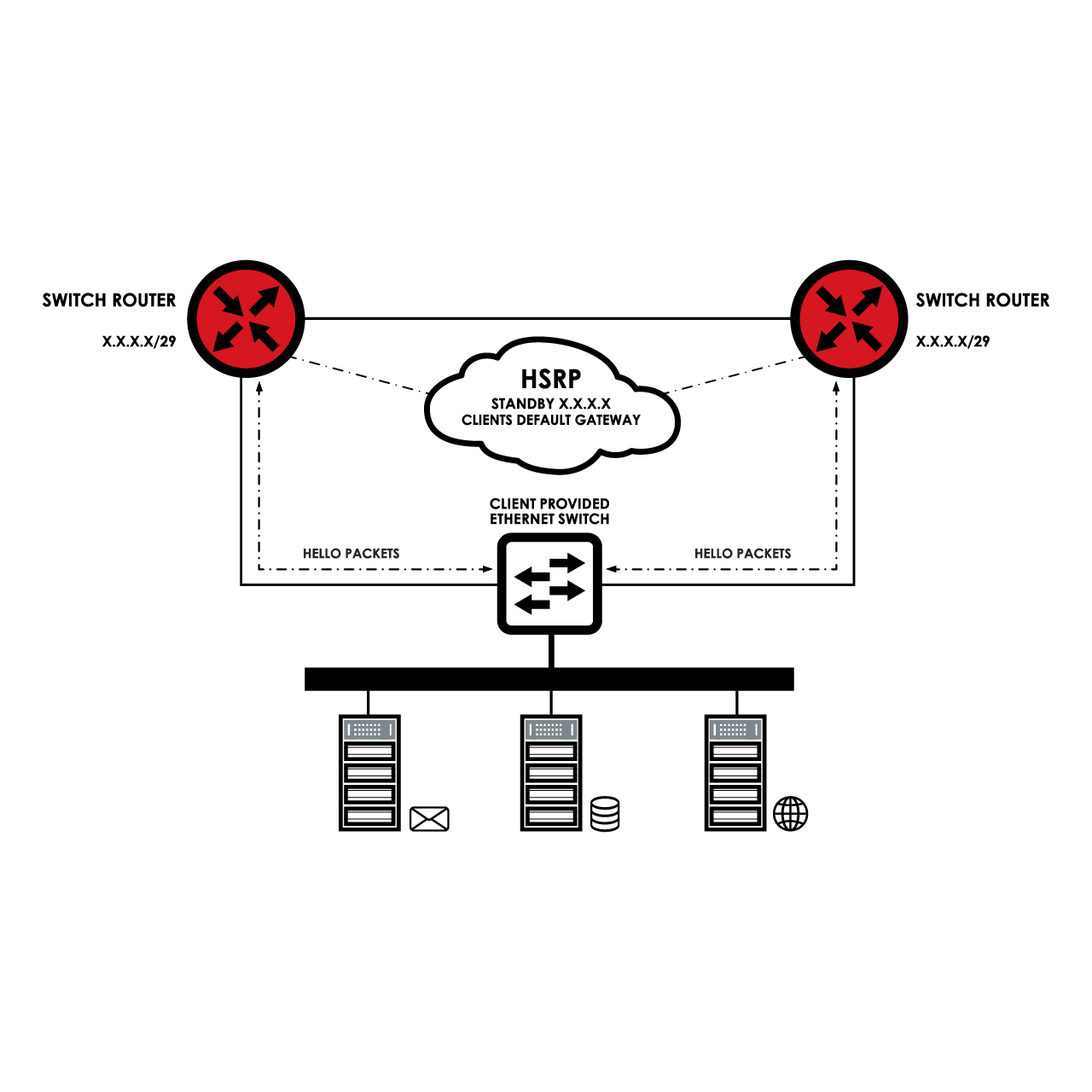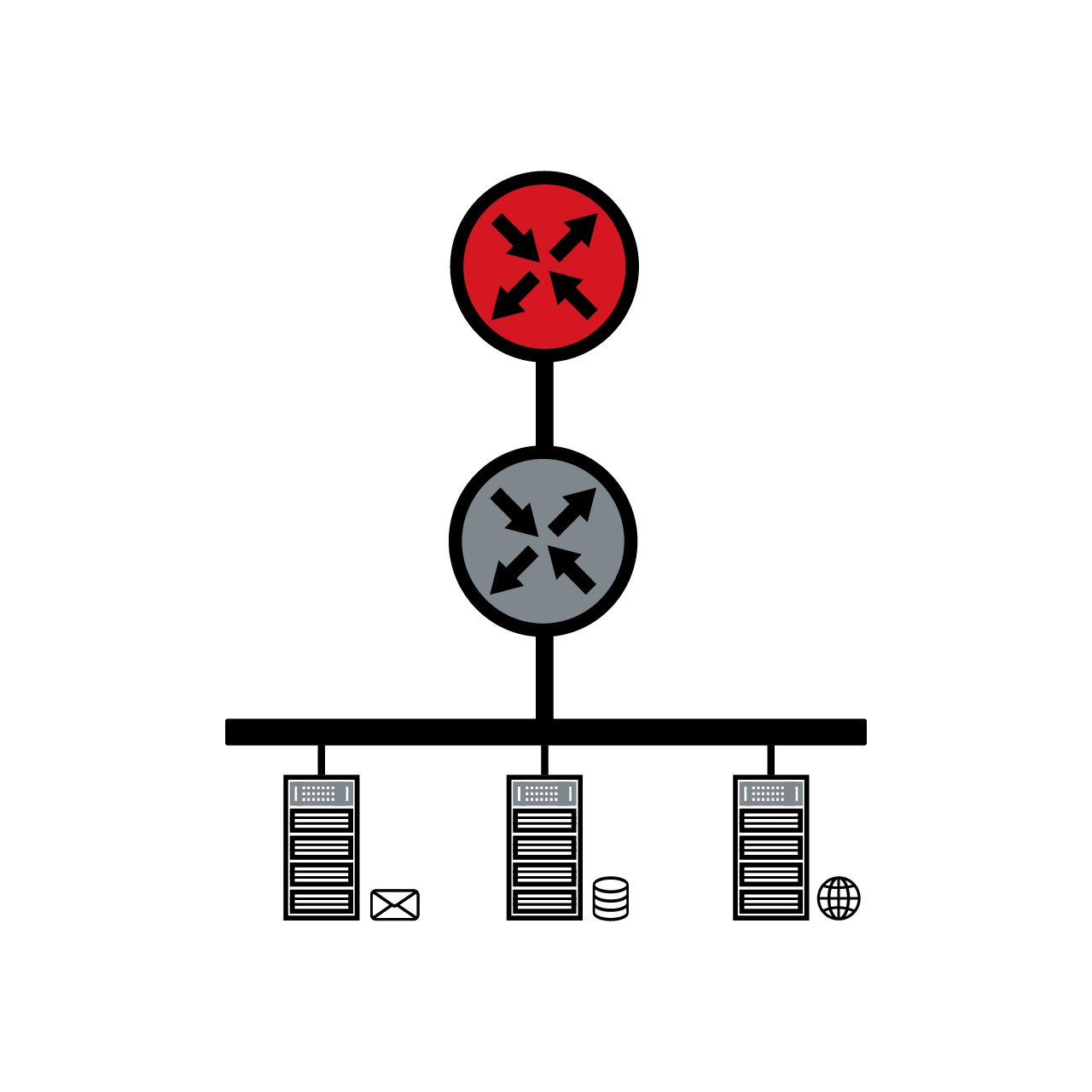Switch customers are provided a number of different options for Internet connectivity. These range from single drops to multiple redundant drops. Redundancy to the customer is provided either by BGP (Border Gateway Protocol) or HSRP (Hot Standby Routing Protocol).
Below are examples of these options.
BGP: SINGLE EXAMPLE CUSTOMER SETUP
BORDER GATEWAY PROTOCOL
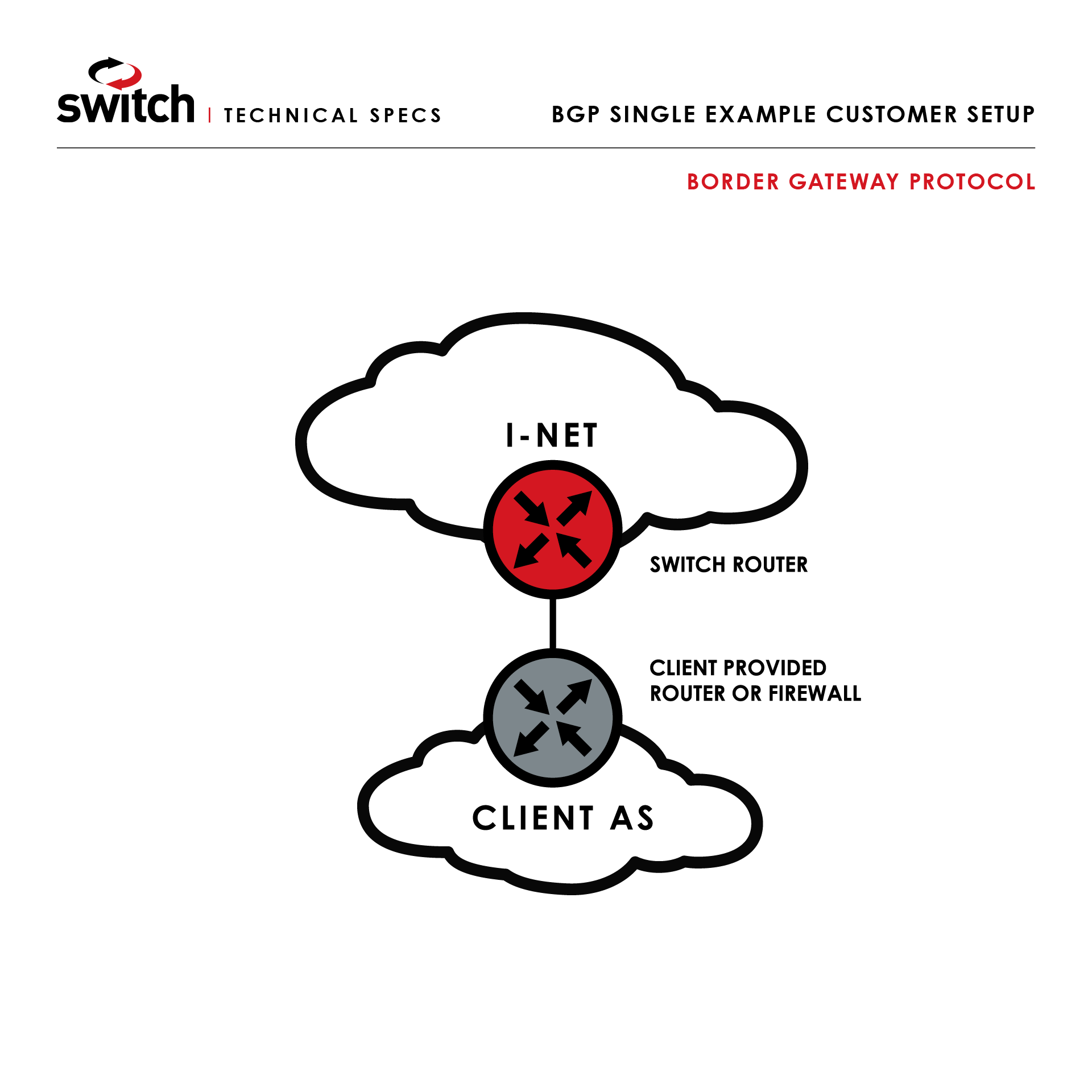
BGP, Border Gateway Protocol, is currently the most appropriate routing protocol to be placed between different systems. In this example, a firm demarcation is created between the systems, however with only one peering this leaves a single point of failure.
OPTIONS
- 1x peering to AS23005
- 1x peering to AS22911
- Switch NetOps can assign a private ASN if needed
- Switch can advertise just a default route, a full routing table or a full routing table + default route to our customers
BGP: MULTI/DUAL HOMED EXAMPLE CUSTOMER SETUP
BORDER GATEWAY PROTOCOL
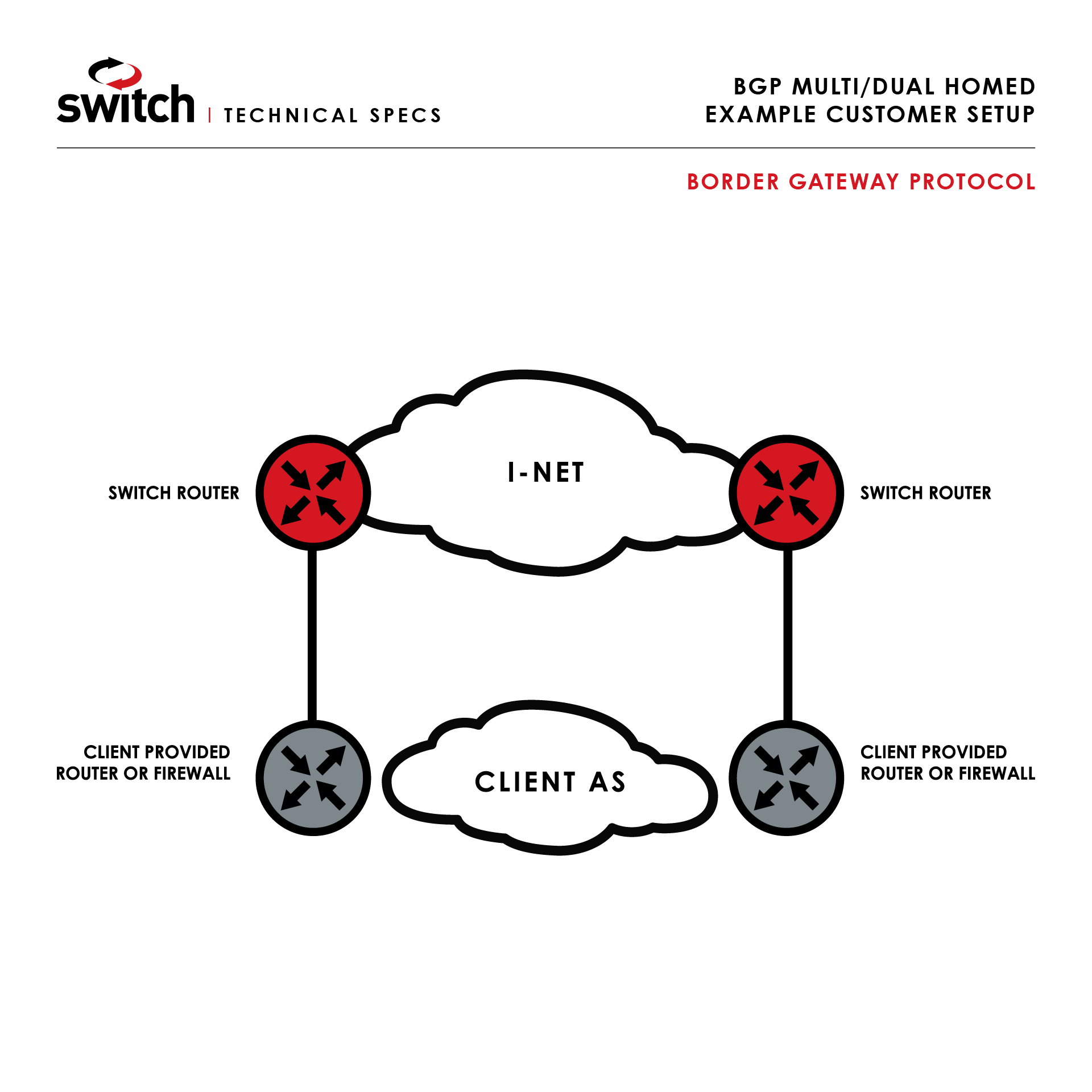
OPTIONS
- 2x peering to AS23005
- Switch NetOps can assign a private ASN if needed
- Switch can advertise just a default route, a full routing table or a full routing table + default route to our customers
HSRP: EXAMPLE CUSTOMER SETUP
HOT STANDBY ROUTING PROTOCOL

HSRP, Hot Standby Routing Protocol, provides a redundant gateway for connected devices. HSRP Configuration is done on Switch Routers however, client handoff requires a layer 2 device (switch) for HSRP Hello Packets to pass between Switch Routers.
OPTIONS
- AS23005 ONLY
- Client can choose either 1 switch, or 2 switches (to eliminate the single point of failure)
- Additional IP requests can be routed or configured as a flat network
SINGLE CONNECTION: EXAMPLE CUSTOMER SETUP
SINGLE CONNECTION
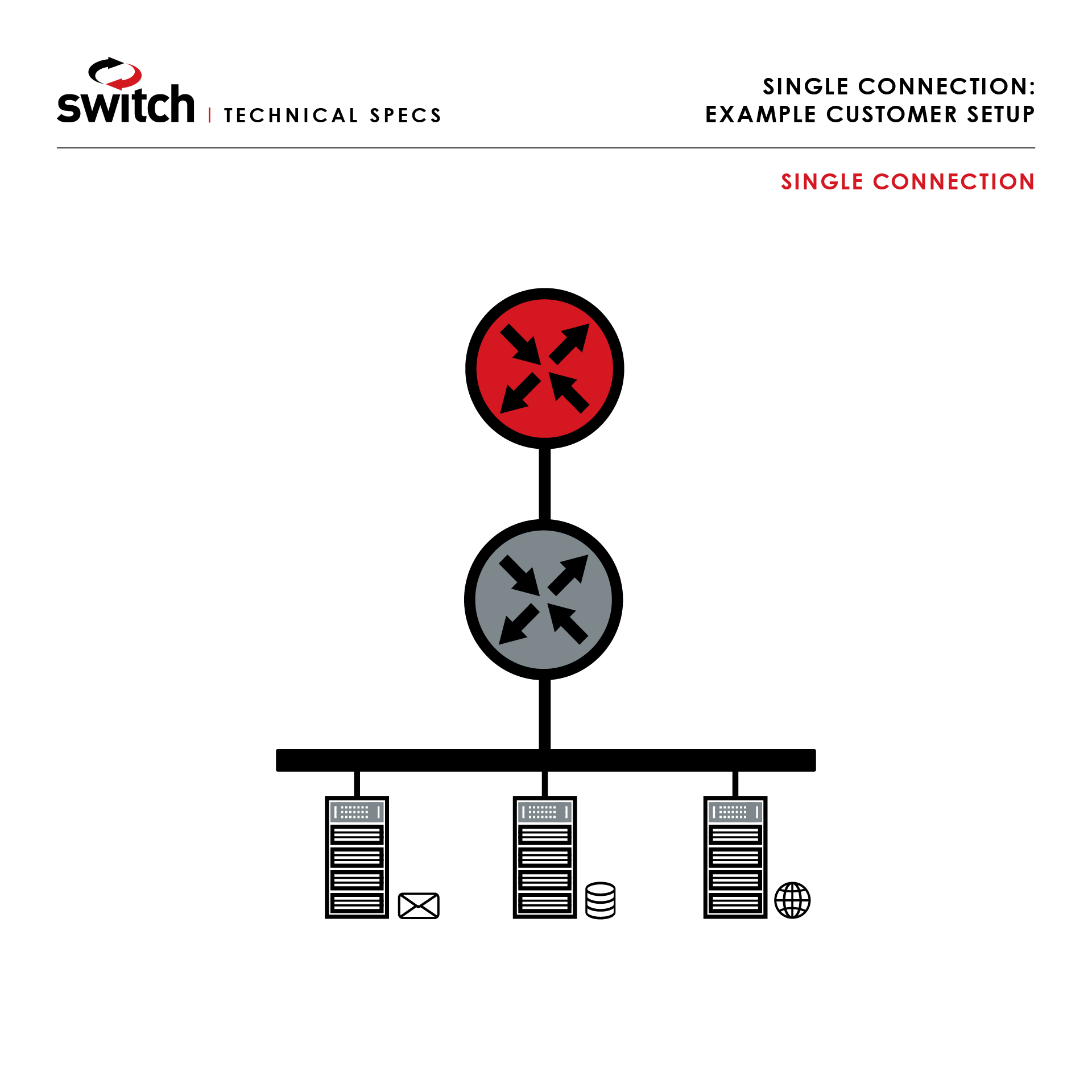
In this model, the Switch router interface acts as a gateway for the connected servers. It should be noted that this is only a single connection, this model is subject to both planned and unplanned events.
OPTIONS
- AS23005
- AS22911
- Client Handoff can be to a layer 2 or layer 3 device (switch, router, or firewall, SD-WAN appliance)*

